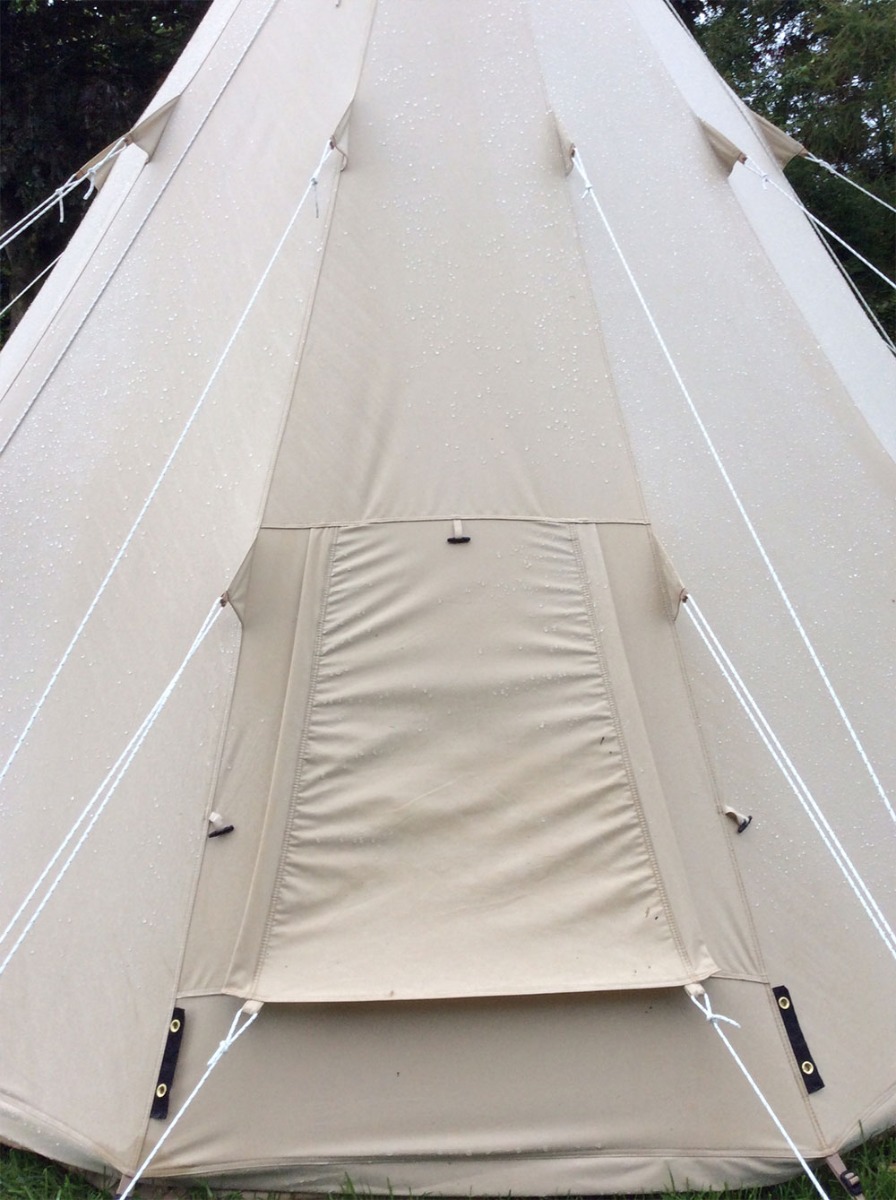About Canvas Tents & Waterproofing
|
Our tents are all natural, water proofed, treated canvas and they need use to fully seal and become completely water tight. This is perfectly normal. Cotton tents need to go through a weathering process to become watertight, it is the same for all canvas tents. When the canvas gets wet the cotton fibers in the weave will shrink (technically the fibers expand, this causes the gaps between the weave to shrink so the process is referred to as shrinking) and knit tightly together closing up any tiny holes in the weave, making the canvas water tight. As well as the canvas needing to become water tight through weathering, the seams will also need to weather to become water tight. This is because the hole the needle makes for stitching the seams will be larger than the thread. The tiny holes in the seams need to expand around the thread in order to seal the seams. The canvas itself will be the first to weather, usually in the first couple of heavy soakings with the seams usually taking longer. Not only does the tent need to get very heavily soaked for the weathering process to be effective, it also needs to dry thoroughly (bone dry) between soakings. Although it is advisable to test your tent prior to camping and if possible spray all over with water and dry a few times, it is not essential as the amount of leaking (if at all) is minimal and should not ruin your camping trip. After this your tent should give you many years of dry warmth in even the heaviest rain or snow. Do not put any items up against the interior surface of the tent as this can wick water away from the canvas surface and cause leaking. Our tents are not treated with fire retardant, due to the chemical being extremely potent and voiding the water proofing of the tent. We personally use an internal wood burning stove in our tents and the tepee design is ideal for this with a flu exit through the cowl, eliminating the need to cut the canvas. Always ensure that you use a wood burner, flu and flu protector suitable for use with a canvas tent. Using a portable carbon monoxide monitor is also advisable. If you are using an electric hook up cable it is easy to just undo the zip at either side of the door, feed in the cable then re attach the zip. If you require further information please click here to contact us. |
 |
